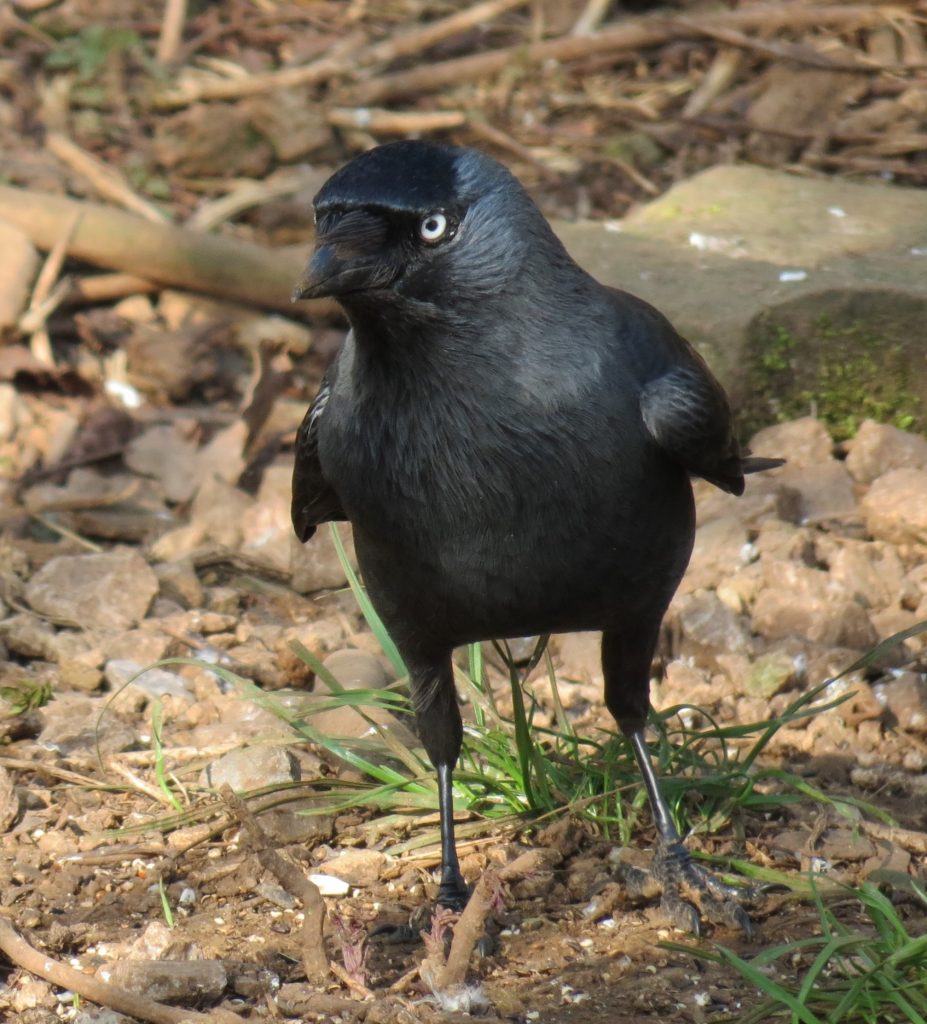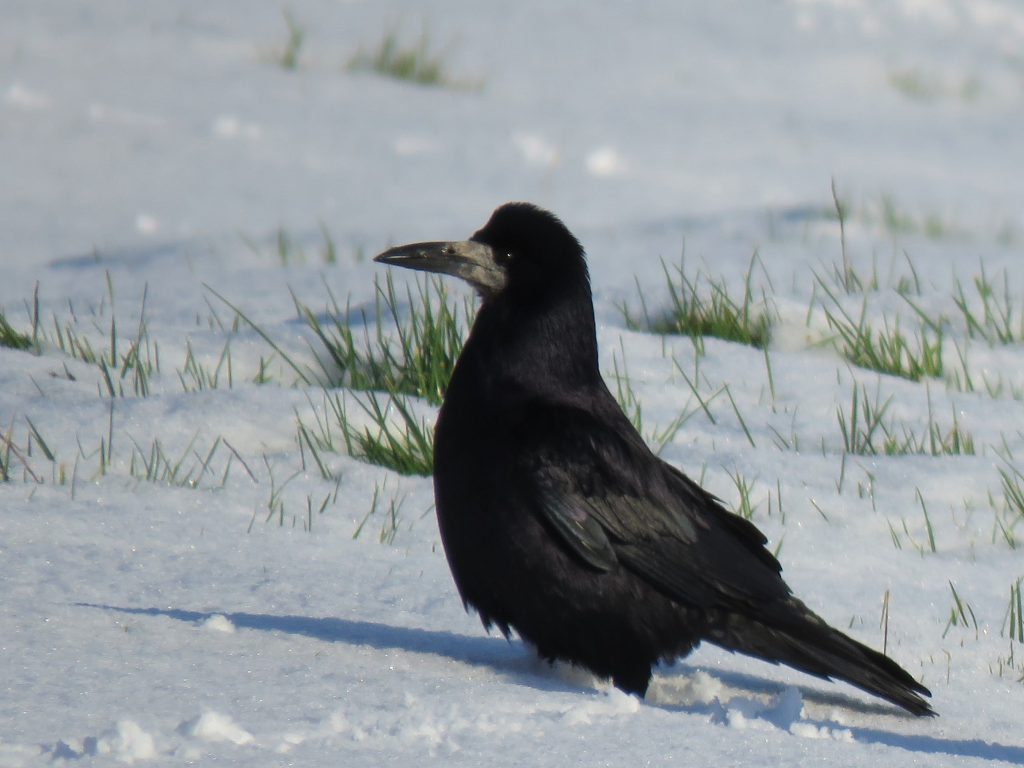Nature Notes February – Corvids (Part One)
If birds are not your thing, I apologise for my decision to dedicate two Nature Notes to the crow family. However, this is a good time of year to get to grips with the identification of our six locally resident “crows”. This month I am concentrating on the four “black” crows and at a later date I will look at our two “colourful” crows and at some crows that you are unlikely to see in Leicestershire.
People who are relatively new to birds tell me that they have difficulty with crow identification. At times; we all do. However, birds seen or heard well can be separated with practice. Helpful factors are size, non-black areas in the plumage, habitat, habits, nest sites and calls.
Jackdaw

Jackdaw is one of the first species I see each day. They use nest boxes, tree holes and, helpfully, chimneys. A quick scan of local roofs usual locates a few Jackdaws. They are the smallest of our crows, notably smaller than Rooks and Carrion Crows. Jackdaws also have grey shading on the nape (back of the head) and a pearly white eye. They are gregarious and call loudly, especially in flight. Helpfully the call can be heard as “Jack, Jack”. When feeding on farmland they mix freely with Rooks, often in very large flocks. They roost communally and large corvid flocks can often be seen late on winter afternoons. Jackdaws come into gardens more frequently than the other “black” crows.
Rook

The Rook is a bird of villages and farmland. If a settlement is too small to have a colony of noisy Rooks nesting in the highest available trees, then to me, it is not really a village. Immature Rooks can be hard to separate from Carrion Crows but the adults have several striking features. As a result of probing deep into the ground, the base of the beak is an un-feathered area of whitish skin. This white face is a give-away when the bird is seen well. Other features are a dishevelled appearance with “baggy trouser” legs, and a distinctive “Raaak” call from which it is assumed that it gained its name. Rooks not only nest in colonies but tend mainly to feed alongside Jackdaws and other Rooks.
See also:
Nature Notes: January – Early Signs of Spring
Nature Notes: November – More finches from afar
Carrion Crow
This crow is very widely distributed and as its name suggests, finds and eats dead things, including road-kill. It is similar in size to the Rook but is more elegant and is often seen on its own; altogether more aloof. A pair of Carrion Crows will build a large nest, high in a tree and well away from other birds. As they are relatively early breeders it is not uncommon for other birds to occupy a Carrion Crow’s nest once the family has fledged. The Hobby, one of our rarer birds of prey, is one species that benefits from the availability of used Crow nests. Carrion Crows can take numbers of eggs and chicks, they . Carrion Crows “Caw” and helpfully they are multiple callers, so usually three or four “Caws” in quick succession.
Raven
Twenty years ago we described Ravens as a bird of Western Britain; perhaps seen when on holiday in Wales or Scotland. Now they have recolonised much of lowland UK and they are thinly, but widely, spread in Leicestershire. Size wise, Raven is to Carrion Crow as Carrion Crow is to Jackdaw. They are big birds, similar in size to Buzzards. Unfortunately size is difficult to judge in distant flight views.
Sightings are made by watching at favoured locations where size is relatively easy to judge or, more frequently by hearing a calling bird(s). Once familiar with the far carrying “Cronk” it is usually possible to find the bird in flight. Depending on how near it comes (sometimes right overhead) you can make out the very heavy bill, shaggy throat feathers and diamond-shaped tail. Ravens are early nesters; in woods and quarries and occasionally, on pylons. From January onwards you may see their spectacular display flights which include tumbling descents and best of all, upside down flying. If you see this you can be in no doubt that your birds are Ravens.




 Another act of kindness
Another act of kindness

